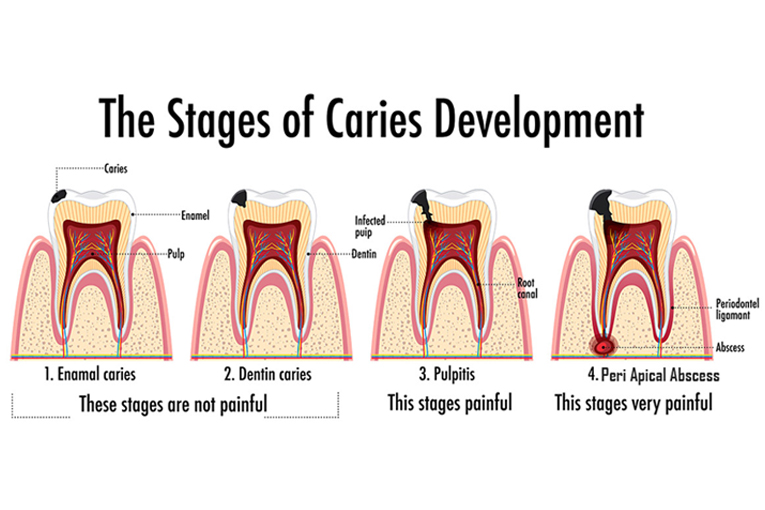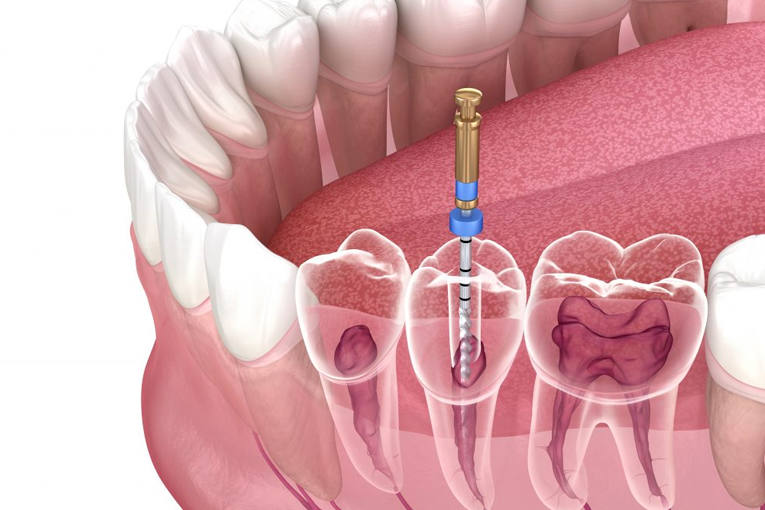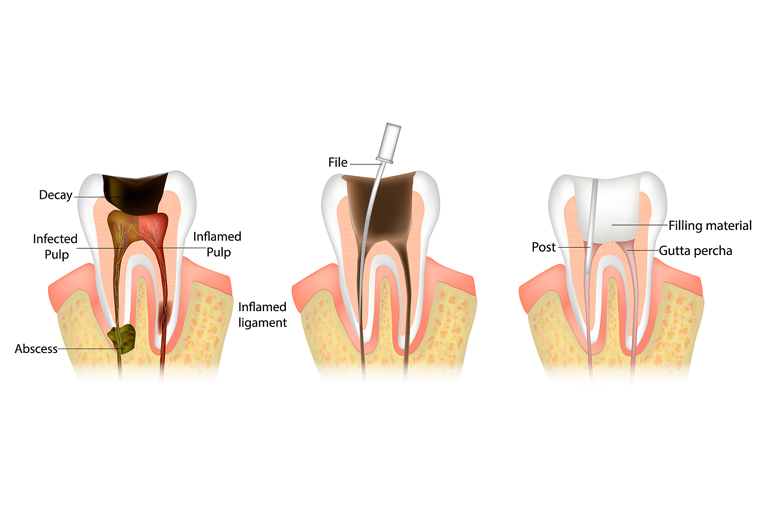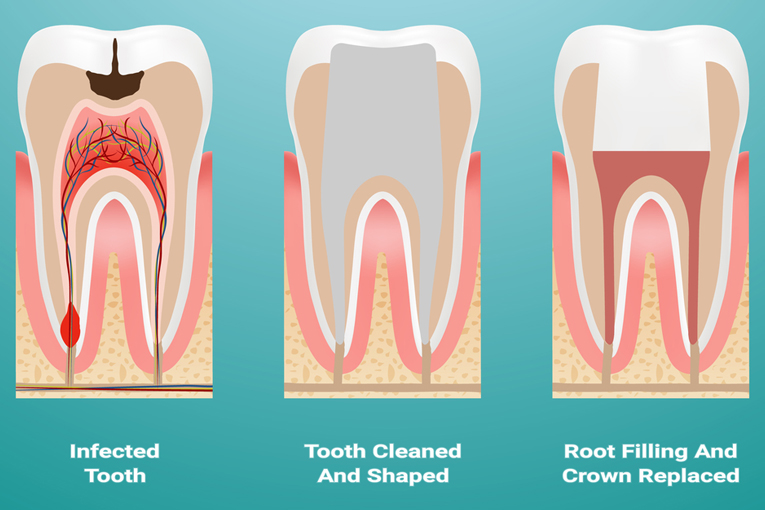Root Canals
Root Canal Treatments
What is Root Canal Treatment?
A root canal is a dental procedure used to treat an infected or inflamed tooth. It involves removing the damaged or infected pulp from the tooth, cleaning and disinfecting the inside of the tooth, and filling it with a material called gutta-percha. The tooth is then sealed with a filling or crown to prevent further infection. The procedure is typically done to save a damaged or infected tooth from extraction.
What is Root Canal Treatment process?
X-ray Examination: To determine the extent of inflammation and tooth decay, we may perform one or two X-rays.
Anesthesia: The Endodontist anaesthetizes the tooth of interest and the surrounding area.
Cleaning and Disinfection: The root canals and pulp chamber are cleaned using instruments. Cleaning and disinfecting the canals involves using antibacterial and antiseptic solutions. This gets rid of the bacteria and treats the canal infection.
Canal Shaping: Next, the pulp canals are shaped using instruments so that they will be ready to receive the filling material.
Canal Filling: The pulp canals are filled using a rubber-like material called gutta-percha which is compressed against the canal walls, so it fits snuggly and avoids the entry of microorganisms.
Crown Enclosure: The treated tooth is enclosed with a crown, which provides additional strength and stability. The permanent crown is made to look exactly like the natural teeth.
Symptoms that may indicate the need for a RCT?
Tooth ache: This is one of the first reasons why you would visit a dentist and the pain can range from mild to severe. The tooth ache can increase on changing position, especially while lying down or biting onto something using that particular tooth.
Sensitivity: In normal cases, the enamel layer covers the inner two layers and we therefore, do not experience any sensitivity. However, when the dentin and pulp layers are exposed, you might experience increased sensitivity to air, hot foods, sour foods and sweet foods. In many cases, the tooth pain might be mild and most patients tend to ignore it. However, even though the pain subsides, the infection can still spread to tissues around the decayed tooth, resulting in a swelling.
Benefits of the treatment
- Relieve symptoms of infection
- Solution of dental pain.
- Protection against decay and gum disease.
- Protects your soft tissue from potentially dangerous damage, such as surgery.
- Medicine safe treatments.
Oral health is overall health
Make sure you are using correct brushing technique
Brushing your teeth at least twice a day is essential – after breakfast in the morning and before going to bed at night. Spend at least 2 minutes brushing, ensuring that all areas are cleaned – the inside, outside, and biting surfaces of each tooth. The key is to aim the toothbrush bristles directly at the gum line, rather than the top of the tooth, as this is where plaque starts to form. Gently move the toothbrush in a circular motion, which will clean away as much plaque from the gums as possible.
Make sure you follow the right diet.
Try to reduce or eliminate the amount of sugary food and fizzy drinks you eat and drink. It converts to acid inside your mouth and can dissolve the minerals in tooth enamel, causing decay (caries) and eventually holes (cavities). Acidic foods and drinks can also cause tooth erosion which causes tooth sensitivity, discolouration and cracks over time.
More tips
After every meal, rinse out your mouth with antiseptic mouthwash to help kill germs, or at least water to wash away food debris. Another handy tip is to clean your tongue as it removes plaque that’s full of bacteria and can cause bad breath. While special plastic tongue scrapers are available at chemists, a toothbrush can be used just as effectively. Don’t be tempted to crack nuts, rip open a plastic package or even remove a bottle top with your teeth – there’s a risk of chipping or breaking. Remember, use your teeth just for chewing food.











